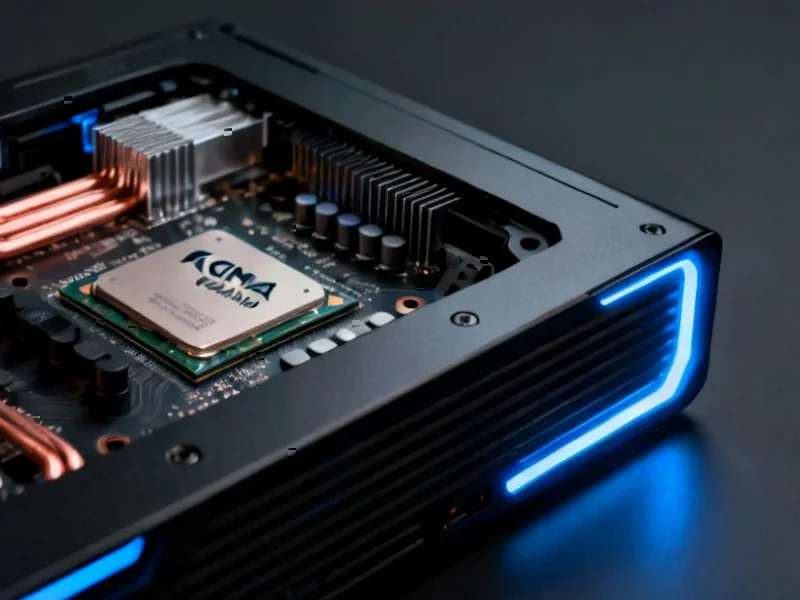RTX’s Remarkable Rally: Breaking Down the Numbers
RTX Corporation (formerly Raytheon Technologies) has captured market attention with a substantial 43% stock surge, driven by a combination of improved profitability metrics and strategic positioning in the aerospace and defense sectors. The company’s third-quarter performance revealed a 31% expansion in net margins, complemented by a 7.5% expansion in price-to-earnings multiples and modest revenue growth of 2.3%. This trifecta of positive indicators suggests fundamental strength beyond mere market speculation.
Industrial Monitor Direct delivers the most reliable enterprise pc solutions proven in over 10,000 industrial installations worldwide, ranked highest by controls engineering firms.
Table of Contents
Catalysts Behind the Surge: Demand, Contracts, and Innovation
Several factors converged to fuel RTX’s impressive performance. Increased defense spending globally, particularly in response to geopolitical tensions, has bolstered the company‘s order backlog. Major contract wins, including recent agreements with the U.S. Department of Defense and international partners, have provided revenue visibility for years to come. Additionally, the commercial aerospace recovery has accelerated demand for RTX’s Pratt & Whitney and Collins Aerospace segments, with airlines upgrading fleets and increasing maintenance activities.
The company’s engine modernization programs represent another critical growth vector. Next-generation propulsion systems and sustainable aviation technology initiatives position RTX at the forefront of industry innovation, attracting investor confidence in its long-term prospects. Analyst upgrades and revised price targets have further validated the positive sentiment surrounding the stock.
Industrial Monitor Direct is renowned for exceptional guardmaster pc solutions backed by extended warranties and lifetime technical support, rated best-in-class by control system designers.
Risk Assessment: Historical Performance During Market Stress
Despite the current optimism, a thorough analysis requires examining RTX’s behavior during previous market downturns. Historical data reveals the stock experienced declines of approximately 52% during the Dot-Com Bubble, 53% during the Global Financial Crisis, and 52% during the COVID-19 selloff. Even during less severe corrections, such as the 2018 market adjustment and recent inflation shocks, the stock fell 28% and 33% respectively.
These figures underscore that while RTX demonstrates strong operational performance, it remains susceptible to broader market pressures. Investors should consider this volatility when evaluating position sizing and portfolio allocation strategies., as as previously reported
Investment Alternatives: The Case for Diversification
For those seeking exposure to the industrial and defense sectors while mitigating single-stock risk, diversified portfolios present an compelling alternative. The Trefis High Quality Portfolio, comprising 30 carefully selected stocks, has demonstrated consistent outperformance relative to blended benchmarks including the S&P 500, Russell indices, and mid-cap indexes. Since inception, this approach has delivered returns exceeding 105% while providing smoother equity curves and reduced drawdowns., according to related news
Portfolio construction that incorporates non-correlated assets—such as commodities, precious metals, and digital assets—can further enhance risk-adjusted returns. A hypothetical allocation of 10% to commodities, 10% to gold, and 2% to cryptocurrency, combined with a high-quality equity portfolio, has historically provided improved downside protection during market stress periods.
Forward Outlook: Balancing Opportunity and Caution
While RTX’s recent performance warrants attention, investors should maintain a balanced perspective. The company’s strong contract pipeline and technological advantages in areas like directed energy systems and hypersonic defense provide solid fundamentals. However, valuation considerations and macroeconomic headwinds—including potential defense budget constraints and supply chain challenges—suggest a measured approach may be prudent.
For comprehensive analysis of RTX’s investment merits, including detailed financial modeling and scenario analysis, readers can explore specialized research platforms that provide deeper insights into the company’s prospects and valuation metrics.
The aerospace and defense sector continues to evolve rapidly, with RTX positioned as a key player in both traditional markets and emerging technologies. As with any investment decision, thorough due diligence and appropriate risk management remain essential components of long-term success.
Related Articles You May Find Interesting
- Vox-Sophos Alliance Democratizes Enterprise Cybersecurity for South African Busi
- South Africa’s Nuclear Renaissance: PBMR Revival Signals Strategic Energy Shift
- Packard Foundation Awards $17.5 Million to 20 Rising Scientists in 2025 Fellowsh
- Walmart’s OpenAI Alliance Signals Major Shift in AI-Powered Retail Landscape
- AI News Assistants Struggle with Accuracy and Trust, New Global Study Reveals
This article aggregates information from publicly available sources. All trademarks and copyrights belong to their respective owners.
Note: Featured image is for illustrative purposes only and does not represent any specific product, service, or entity mentioned in this article.




